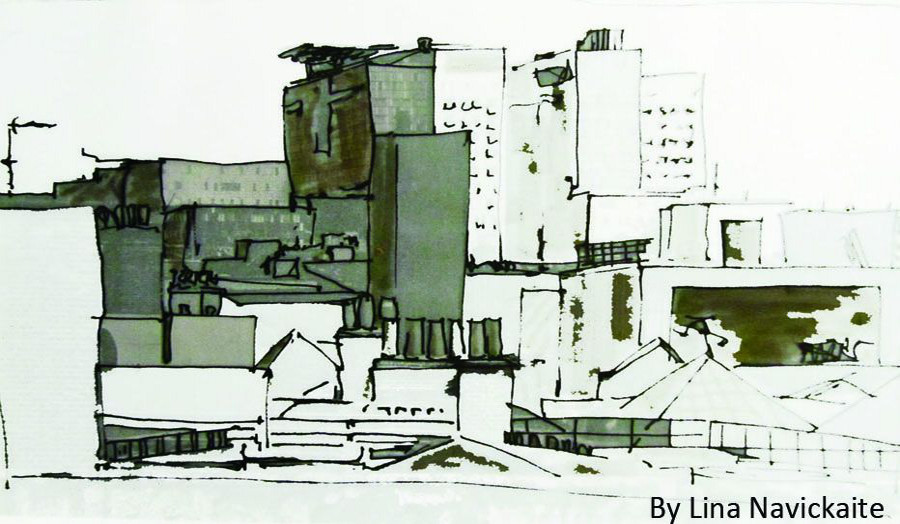Studio philosophy
Our cities now have to rethink and redevelop the use of space more creatively and ingeniously than ever before. Space is precious in any context but the extra pressure cities face with the ever-growing need to accommodate increasing populations mean that every open area is now a new possibility for spatial development. This Studio seeks to develop a narrative that connects perceived invisible social and cultural issues to meaningful structures and interior spaces, aiming to enhance the participants' lives through interaction with appropriate design solutions that provide a legacy that can evolve.
'We shape our buildings: thereafter they shape us.'
—Winston Churchill
One of the most recent and fascinating themes is discovering interstitial spaces, gaps within the urban landscape. Their appeal lies in their surprise and undiscovered disposition. Their purpose might involve a large community or an individual but because of its hidden or exposed position, providing an adventure, or unexpected experience. It provides opportunities for older established buildings to convey a new brief and therefore a new spirit, encouraging creativity and positive thinking, using a different energy.
The urban master planners and the local communities have to consider a more responsible composition of ideas to our environmental needs. Sustainable energy use and material choice are to be rewarded but how does this connect with the individual and the surroundings? The studio will investigate responsible approaches to materials and how new emerging technologies can have a positive impact on those who inhabit your spaces.
'Sustainable development is development that meets the needs of the present without compromising the ability of future generations to meet their own needs.'
UN, Brundtland report, 1987 (RIBA 2012)
Project:
In 2020 the Regents Canal will celebrate its 200th anniversary. The canal’s history of connecting local communities, and beyond, through trade and business and ancillary industries has now been lost due to improved London’s infrastructure. Considering that Councils are seeking to provide stronger relationships within local communities due to a perceived disconnection of age, culture and values, how can an intervention on, over, adjacent or connected to the canal, enable neighbourhoods to come together, building a legacy of interaction and creativity for future generations?
The studio will take an investigative approach to the environment that exists along the Regent’s canal where it winds through from Kings Cross through Hoxton and south Hackney, down to Limehouse Basin. You are asked to create and generate ideas using an entrepreneurial spirit, map, and explore the existing materiality of the area, while simultaneously connecting to areas of interest within the community. The development and experimentation of these ideas, through research, drawing and modelling, aims to enhance your skills with spatial concepts, while developing haptic skills. The presentation will be represented in a number of industry-led formats, developing professional practice and approaches, leading to publication and exhibitions.
Mentored sessions will enable the participants to discuss and debate first hand their ideas, through workshops, tutorials and critiques. The studio is connected to a number of Universities across the world, including Ecole Boulle from Paris, through a joint workshop. Dong Yang Mirae and Gachon Universities from South Korea will be undertaking the project within their own context and publishing their outcomes with ours. A joint blog and newspaper will allow for all participants to share ideas, process and practice. The year will end with a collaborative exhibition within the public realm.
The Theme:
Hidden Space - The Generation Gap
Students are asked to research perceivably hidden issues around the theme of ‘the generation gap’ to develop ‘the rise of the creative district’ (M. Davey 2012), through an appropriate intervention, along a chosen site connected to the Regents Canal.
- Employability
- Lost and future skills
- Archive
- Event
- Other
The intervention should encourage the development of a ‘creative district’, through fitting and sustained interaction with your design, providing a meaningful legacy.
Further supporting briefs for Level 6, enabling the major project and research for the studio theme.
- RSA Student awards
- D&AD Student awards
- Independent project following similar themes and narratives.
Learning and Teaching
- Investigation into community, environment and materials of the site, with an emphasis on building a strong narrative to support the design process
- Development through extensive model making leading to a professional output.
- Experimentation and discovery through traditional craft skills and digital media to demonstrate and further your ideas
- Workshops and competitions
- Mentoring and critiques with professional practice
- Producing a collaborative book for publication
- Undertaking a series of exhibitions, including Clerkenwell Design Week
- Opportunities to win internships with leading practices.
Throughout this project there will be opportunities to develop
- Work with a Charity
- Volunteering and Community workshops
- Event pop up/ accommodation linked to a major brand
Study Trip: Rotterdam

Details
| Course | Interior Architecture and Design BA (Hons) Interior Design BA (Hons) |
| Tutor | Janette Harris Liz Freemont |
| Where | CR527C, 41 Commercial Road |
| When | Tuesdays, Fridays |
Shamma Al Ali
Roozbeh Ardeshirzadeh
Gavin Bell
Ruzanna Bevorgyan
Veronica Buzgau
Jowita Chanowska
Jenevieve Donaldson
Marek Jankovskij
Vaida Kvedaraite
Robart Meshev
Iliana Plamenova Mitova
Ivy Nyafwono
Angeliki Papvasileiou
Jon- Pierre Robinson
Ricardo Samuel
Katie Underdown
Saba Zohrabbagi
Shahzad Akhtar
Christopher Crawford Kelly
Samaneh Khazaei
Lina Navickaite
Maria Cristina Rech
Konstantina Tsirogianni
Monika Vanagaite
Lois Woodgate
